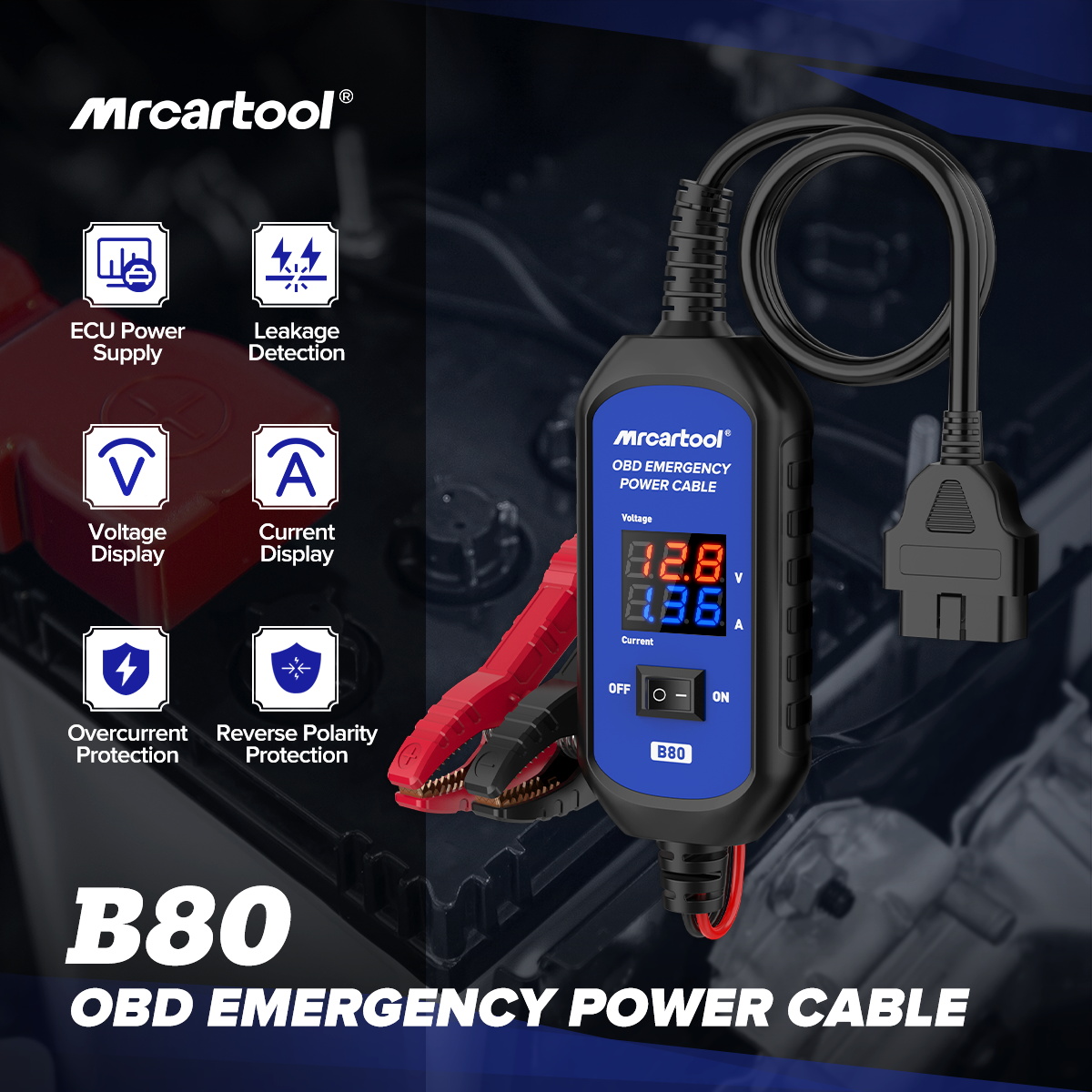
Why Every Workshop Should Have an Automotive Memory Saver
- Tina
- July 17, 2025

1.What Is an Automotive Memory Saver?
2.What Happens When Power Is Lost?
- Radio and entertainmentt system reset
- Loss of clock, seat, and mirror memory settings
- ECU requires idle relearning
- Diagnostic trouble codes may appear, or transmission shift logic may be lost
- In some vehicles, the key may not be recognized or starting may become difficult
In high-end or European vehicles, power loss can even trigger anti-theft system lockout or require factory tools for reprogramming.
- Technicians spend extra time after customer complaints
- A simple battery replacement turns into a technical issue
- Time loss and reduced overall efficiency
3.Why Should Workshops Use a Memory Saver?
It’s not just about preserving the customer’s settings — it’s also about protecting your workflow and maintaining strong customer relationships.
- 🔧 Save Labor Time: Avoid spending 10–30 minutes resetting systems after every power loss
- 🧯 Reduce Misunderstandings: Prevent customer complaints like “you messed up my car” due to lost seat or radio settings
- 🚗 Easy to Use: Even junior technicians can handle it, helping standardize your workflow
In the long run, it’s a low-cost tool that boosts customer satisfaction and workshop efficiency.
4.How to Use It?
- Turn off the engine and switch the key to the OFF position.
- Connect the memory saver to the OBD port or cigarette lighter socket.
- Supply external power (such as a 12V lithium battery or jump starter).
- When the power indicator light turns on, begin replacing the battery.
- After replacement, disconnect the device and start the vehicle.
MRCARTOOL B80 memory saver car feature reverse polarity protection, short-circuit protection, and LED power indicators, ensuring high safety and suitability for repeated use in workshop environments.
5.Recommended Product: MRCARTOOL Automotive Memory Saver
-
MRCARTOOL N220 Digital Inspection Camera 3.9mm 210°
Rated 5.00 out of 5 based on 1 customer rating$249.00
Key Features:
- Compatible with all OBD II vehicles (models from 2000 onwards)
- Supports both cigarette lighter and OBD port connections
- Industrial-grade durable cables, designed for long-term workshop use
- Built-in LED indicator for clear operation status
- Reverse polarity and overload protection for safety and reliability
- Can be used with any 12V portable power supply or jump starter
6.Conclusion
As modern vehicle electronic systems become increasingly complex, replacing a battery is no longer just a matter of loosening a few screws. A single power loss can trigger multiple electronic system resets, wasting time, causing misunderstandings, and even damaging customer trust.
Yet, a memory saver costing just a few dozen dollars can completely prevent these issues.
✅ If your workshop replaces more than one battery per week, this is a tool you should have as standard.
It saves time, reduces hassle, and boosts customer satisfaction.







































2 thoughts on “Why Every Workshop Should Have an Automotive Memory Saver”
Can I contact Administration?
I’ts important.
Regards.
Thank you for your review. Yes, this product can perform these functions.